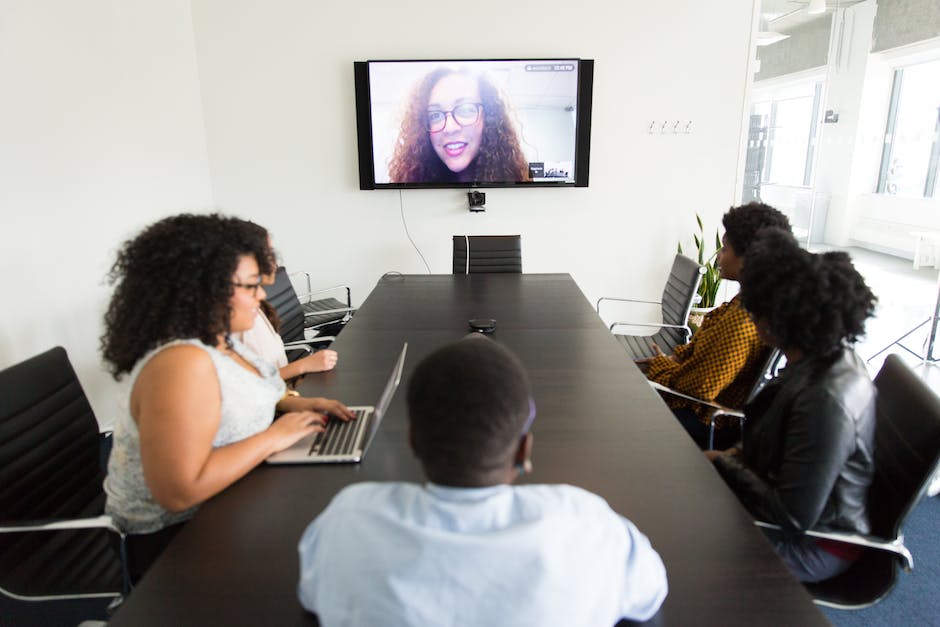Table of Contents
Tips for Building a Cohesive Remote Team: Creating Strong Bonds in a Virtual World.
Introduction
Creating Strong Bonds in a Virtual Team: Tips for Building a Cohesive Remote Team
Building a cohesive and strong team is crucial for the success of any organization, whether it operates in a physical office or in a virtual environment. However, when team members are spread across different locations and work remotely, establishing and maintaining strong bonds can be more challenging. In this article, we will explore some effective tips for building a cohesive remote team, fostering collaboration, communication, and trust among team members. By implementing these strategies, organizations can create a supportive and connected virtual work environment that enhances productivity and overall team performance.
Importance of Communication in a Virtual Team

Creating Strong Bonds in a Virtual Team: Tips for Building a Cohesive Remote Team
In today’s digital age, remote work has become increasingly common. With the advancements in technology, teams can now collaborate and communicate effectively without being physically present in the same location. However, building a cohesive remote team can be challenging, as team members may feel isolated and disconnected from one another. One of the key factors in creating strong bonds within a virtual team is effective communication.
Communication is the foundation of any successful team, and this holds true for virtual teams as well. In a remote setting, team members rely heavily on communication tools such as email, instant messaging, and video conferencing to stay connected. It is crucial for team leaders to establish clear communication channels and guidelines to ensure that everyone is on the same page.
Regular and consistent communication is essential in a virtual team. Team members should be encouraged to communicate frequently and openly, sharing updates, ideas, and concerns. This helps to foster a sense of belonging and trust within the team. It is also important for team leaders to be accessible and responsive, providing timely feedback and guidance to team members.
In addition to regular communication, virtual teams can benefit from face-to-face interactions. Video conferencing tools allow team members to see and hear each other, creating a more personal and engaging experience. This helps to build rapport and strengthen relationships within the team. Team leaders should schedule regular video meetings to discuss important matters, brainstorm ideas, and provide opportunities for team members to connect on a more personal level.
Another aspect of effective communication in a virtual team is active listening. Team members should be encouraged to actively listen to one another, showing empathy and understanding. This helps to create a supportive and inclusive team environment, where everyone feels valued and heard. Team leaders can promote active listening by setting ground rules for meetings, such as allowing each person to speak without interruption and encouraging the use of non-verbal cues to show engagement.
Transparency is also crucial in a virtual team. Team members should have access to relevant information and be kept informed about important decisions and changes. This helps to build trust and ensures that everyone is working towards the same goals. Team leaders should provide regular updates and share relevant documents and resources to keep the team informed and engaged.
In a virtual team, it is important to recognize and celebrate achievements. Team members may not have the opportunity to physically congratulate one another, so it is essential to find alternative ways to acknowledge and appreciate their efforts. Team leaders can organize virtual celebrations, such as online recognition events or virtual team-building activities, to foster a sense of camaraderie and boost team morale.
In conclusion, effective communication is vital in building strong bonds within a virtual team. Regular and consistent communication, both written and face-to-face, helps to foster a sense of belonging and trust. Active listening, transparency, and recognition of achievements are also important factors in creating a cohesive remote team. By implementing these tips, team leaders can create a supportive and collaborative virtual team environment, where team members feel connected and motivated to achieve their goals.
Strategies for Building Trust and Rapport in a Remote Team
Creating Strong Bonds in a Virtual Team: Tips for Building a Cohesive Remote Team
Strategies for Building Trust and Rapport in a Remote Team
In today’s digital age, remote work has become increasingly common. With the advancements in technology, teams can now collaborate and communicate effectively without being physically present in the same location. However, building trust and rapport in a remote team can be challenging. Without face-to-face interactions, it can be difficult to establish strong bonds among team members. In this article, we will explore some strategies for building trust and rapport in a remote team.
First and foremost, effective communication is key to building trust and rapport in a remote team. Since team members are not physically present, it is crucial to establish clear and open lines of communication. Regularly scheduled video conferences and team meetings can help foster a sense of connection and allow team members to interact with each other. Additionally, utilizing instant messaging platforms and project management tools can facilitate real-time communication and collaboration.
Another important strategy for building trust and rapport in a remote team is to encourage transparency and accountability. When team members are transparent about their work progress and challenges, it helps build trust among team members. Regularly sharing updates and progress reports can keep everyone informed and involved. Furthermore, setting clear expectations and deadlines can help ensure that team members are accountable for their work.
Building trust and rapport in a remote team also requires creating opportunities for social interaction. In a traditional office setting, team members often have the chance to bond over lunch breaks or casual conversations. In a remote team, it is important to create virtual spaces for social interaction. This can be done through virtual team-building activities, such as online games or virtual happy hours. By providing opportunities for team members to connect on a personal level, trust and rapport can be strengthened.
Additionally, recognizing and celebrating achievements is crucial in building trust and rapport in a remote team. In a virtual setting, it can be easy for team members to feel isolated and undervalued. By acknowledging and appreciating the efforts and accomplishments of team members, it helps foster a positive and supportive team culture. This can be done through public recognition in team meetings or through virtual rewards and incentives.
Lastly, it is important for team leaders to lead by example in building trust and rapport in a remote team. Leaders should demonstrate trustworthiness, transparency, and open communication. By setting a positive example, team leaders can inspire trust and encourage team members to do the same. Additionally, team leaders should be accessible and approachable, providing support and guidance when needed.
In conclusion, building trust and rapport in a remote team is essential for creating a cohesive and productive work environment. Effective communication, transparency, social interaction, recognition of achievements, and strong leadership are all key strategies for building trust and rapport in a remote team. By implementing these strategies, teams can overcome the challenges of remote work and create strong bonds that contribute to their success.
Effective Team Collaboration Tools for Virtual Teams
Creating Strong Bonds in a Virtual Team: Tips for Building a Cohesive Remote Team
Effective Team Collaboration Tools for Virtual Teams
In today’s digital age, remote work has become increasingly common. With the rise of technology, teams are no longer confined to a physical office space. Instead, they can collaborate and communicate from anywhere in the world. While this flexibility offers many benefits, it also presents unique challenges, particularly when it comes to building strong bonds within a virtual team. However, with the right tools and strategies, it is possible to foster a sense of cohesion and collaboration among remote team members.
One of the most important aspects of building a cohesive remote team is effective communication. Without face-to-face interaction, it is crucial to establish clear channels of communication. Fortunately, there are numerous collaboration tools available that can facilitate this process. Platforms such as Slack, Microsoft Teams, and Google Hangouts allow team members to communicate in real-time, share files, and collaborate on projects. By utilizing these tools, team members can stay connected and informed, fostering a sense of unity and collaboration.
In addition to communication tools, project management software is essential for virtual teams. Platforms like Trello, Asana, and Basecamp provide a centralized location for team members to track progress, assign tasks, and set deadlines. This not only helps keep everyone on the same page but also promotes accountability and transparency. When team members can see the progress of a project and understand their role within it, they are more likely to feel engaged and invested in the team’s success.
Another crucial aspect of building a cohesive remote team is fostering a sense of trust and camaraderie. In a traditional office setting, team members have the opportunity to interact and build relationships naturally. However, in a virtual team, these opportunities are limited. To overcome this challenge, it is important to create opportunities for team members to connect on a personal level. This can be done through virtual team-building activities, such as online games or virtual happy hours. By providing a space for informal interactions, team members can get to know each other beyond their professional roles, building trust and rapport.
Furthermore, regular virtual meetings are essential for maintaining team cohesion. These meetings provide an opportunity for team members to discuss progress, address challenges, and share ideas. By scheduling regular check-ins, team leaders can ensure that everyone is on the same page and that any issues are addressed promptly. Additionally, these meetings can be used to celebrate successes and recognize individual contributions, further fostering a sense of unity and motivation within the team.
Finally, it is important to establish clear goals and expectations for the team. When team members understand their roles and responsibilities, they are more likely to feel motivated and engaged. By setting clear objectives and providing regular feedback, team leaders can ensure that everyone is working towards a common goal. This clarity not only promotes productivity but also helps build trust and accountability within the team.
In conclusion, building a cohesive remote team requires effective communication, the use of collaboration tools, fostering trust and camaraderie, regular virtual meetings, and clear goals and expectations. By utilizing these strategies, team leaders can create a sense of unity and collaboration among remote team members. While the challenges of virtual teamwork may be unique, with the right tools and strategies, it is possible to build strong bonds and achieve success in a virtual environment.
Promoting Team Engagement and Motivation in a Virtual Work Environment
Creating Strong Bonds in a Virtual Team: Tips for Building a Cohesive Remote Team
Promoting Team Engagement and Motivation in a Virtual Work Environment
In today’s digital age, remote work has become increasingly common. With the advancements in technology, teams can now collaborate and communicate effectively without being physically present in the same location. However, building a cohesive and engaged remote team can be a challenge. Without the face-to-face interactions and shared physical space, it is crucial to find alternative ways to foster team engagement and motivation. In this article, we will explore some tips for creating strong bonds in a virtual team.
First and foremost, effective communication is the foundation of any successful team, whether virtual or not. In a remote work environment, it is essential to establish clear channels of communication and ensure that team members are comfortable using them. Regular video conferences, instant messaging platforms, and project management tools can facilitate seamless communication and keep everyone on the same page. By encouraging open and transparent communication, team members can feel connected and engaged, even if they are miles apart.
Another key aspect of building a cohesive remote team is fostering a sense of trust and camaraderie among team members. Trust is crucial for effective collaboration and can be built through regular check-ins, sharing personal experiences, and encouraging team members to support and rely on each other. Virtual team-building activities, such as virtual happy hours or online games, can also help create a sense of camaraderie and strengthen the bonds between team members.
In addition to trust, recognizing and appreciating the efforts of team members is vital for promoting motivation and engagement. In a virtual work environment, it is easy for team members to feel isolated and disconnected. By acknowledging their contributions and providing regular feedback, team leaders can boost morale and create a positive work environment. Virtual recognition programs, such as virtual shout-outs or online awards, can also be effective in showing appreciation and motivating team members.
Furthermore, creating opportunities for collaboration and teamwork is essential for building a cohesive remote team. Virtual brainstorming sessions, collaborative projects, and cross-functional teams can foster a sense of unity and shared purpose. By encouraging team members to work together and leverage each other’s strengths, leaders can create a strong sense of belonging and promote engagement within the team.
Lastly, promoting work-life balance is crucial for maintaining a motivated and engaged remote team. Remote work often blurs the boundaries between work and personal life, making it challenging for team members to disconnect and recharge. Encouraging regular breaks, setting clear expectations regarding working hours, and providing resources for mental well-being can help team members maintain a healthy work-life balance. By prioritizing their well-being, leaders can ensure that team members feel supported and motivated to perform at their best.
In conclusion, building a cohesive and engaged remote team requires intentional effort and effective communication. By establishing clear channels of communication, fostering trust and camaraderie, recognizing and appreciating team members’ efforts, promoting collaboration, and prioritizing work-life balance, leaders can create a strong bond within their virtual team. With these tips in mind, organizations can overcome the challenges of remote work and create a motivated and cohesive remote team that thrives in the digital age.
Q&A
1. What are some tips for building a cohesive remote team?
– Establish clear communication channels.
– Foster a sense of trust and transparency.
– Encourage regular virtual team meetings.
– Promote team collaboration and engagement.
2. How can clear communication channels be established in a virtual team?
– Use reliable communication tools like video conferencing and instant messaging.
– Set expectations for response times and availability.
– Encourage open and honest communication among team members.
– Provide clear guidelines for sharing information and updates.
3. What can be done to foster trust and transparency in a remote team?
– Encourage open dialogue and active listening.
– Share information and updates regularly.
– Provide opportunities for team members to share their thoughts and ideas.
– Establish a culture of accountability and follow-through.
4. How can team collaboration and engagement be promoted in a virtual setting?
– Encourage regular virtual team-building activities.
– Provide opportunities for team members to collaborate on projects.
– Foster a supportive and inclusive team culture.
– Recognize and celebrate team achievements.
Conclusion
In conclusion, building strong bonds in a virtual team is crucial for creating a cohesive remote team. To achieve this, it is important to establish clear communication channels, foster trust and transparency, encourage regular virtual team meetings, promote collaboration and teamwork, and provide opportunities for team members to connect on a personal level. By implementing these tips, organizations can enhance team cohesion, productivity, and overall success in a virtual work environment.




